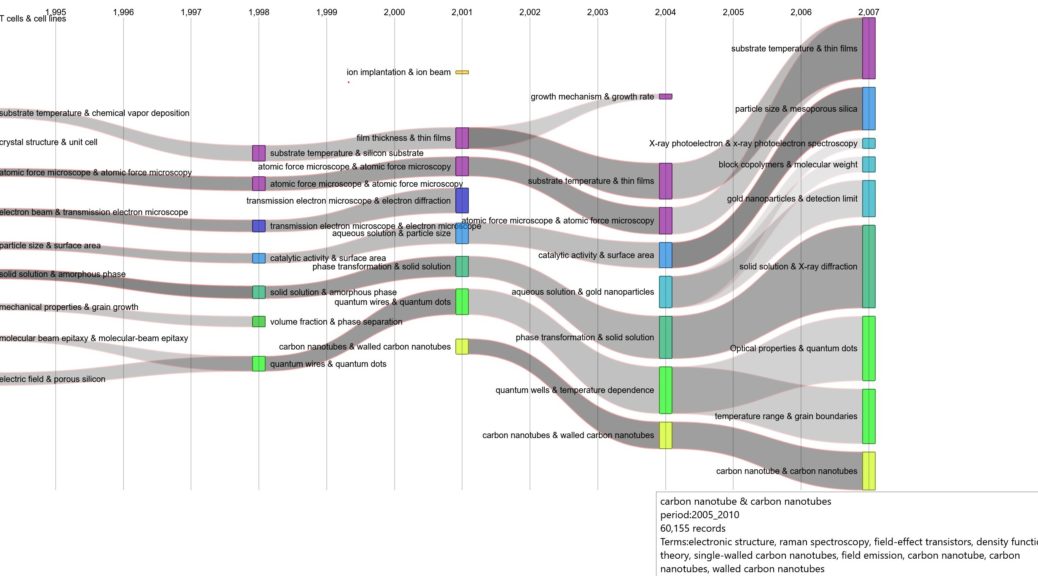This page describes the principal options under the dynamics panel in the mapping script.
If your corpus has time series data, you may want to define periods and produced an alluvial diagram (Rule et al., 2015).
Defining time periods
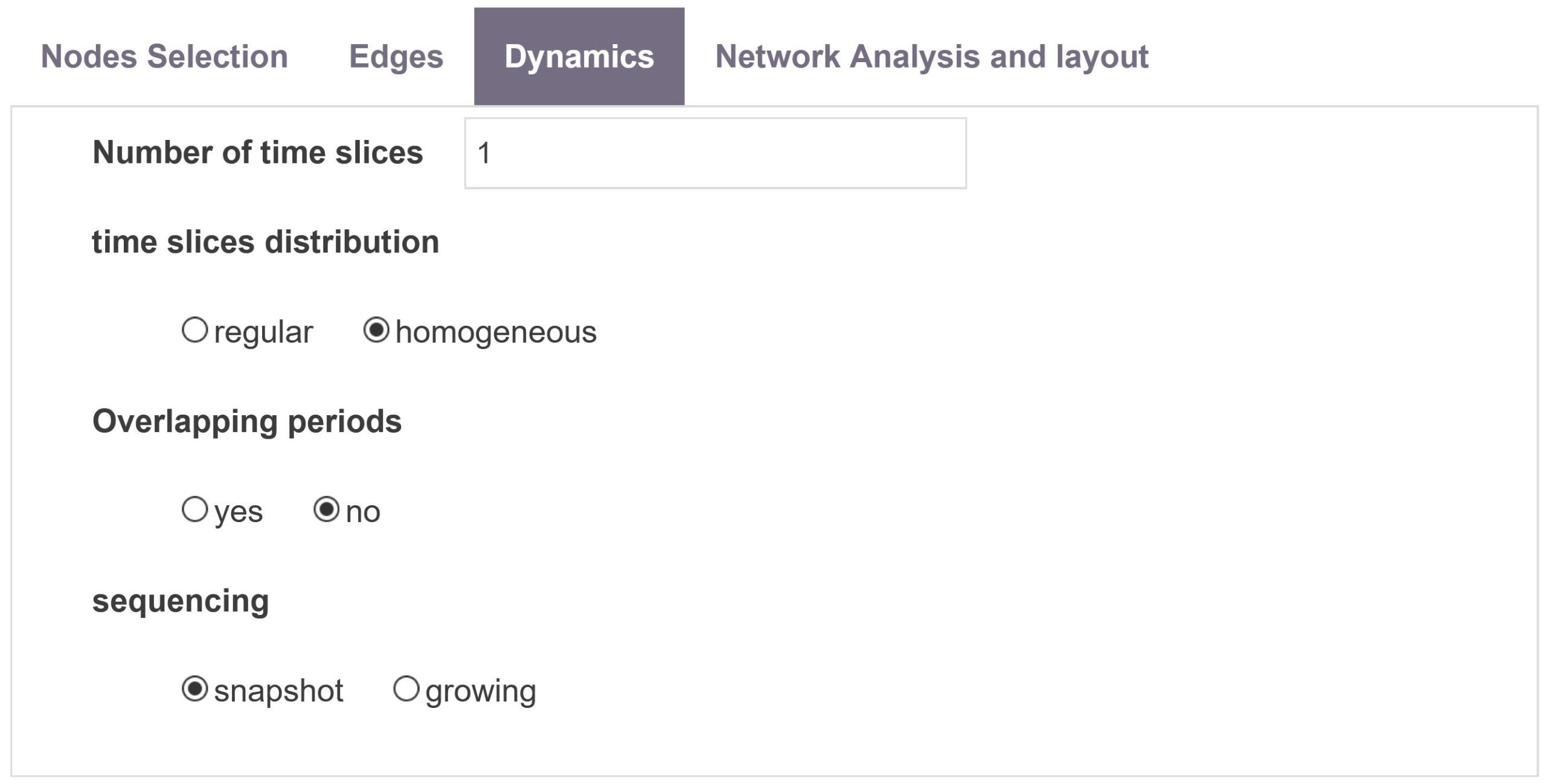
Network mapping script also enables users to divide a corpus according to their need. One can work with custom initial time ranges (as defined by period slicer script) or with standard periods (typically a yearly defined corpus).
Number of time slices
You are then asked in how many slices you wish to divide your corpus.
If you want that the different sub-parts to be equal regarding the number of years (regular) or regarding the number of documents (homogeneous). Each time period will be assigned a sub-corpus gathering all documents produced during this time range from which a specific analysis will be build. By default, periods are sliced to produce a partition of the corpuses overall timespan.
Overlapping periods
However when overlapping periods is activated, time slices intersections are not empty anymore. One time period will intersect with its preceding and succeeding time periods such that half of the time steps or half of the records (if homogeneous slicing has been selected) are shared with either of them.
sequencing
Snapshot mode consists of successive periods, possibly overlapping, growing mode will create periods starting from first time-step with increasing length.
Intertemporal analysis advanced settings
Find in the Network Analysis & Layout options panel, some advanced parameters to fine-tune the behaviour of the intertemporal analysis and its layout:
- Automatic Intertemporal Threshold
- Intertemporal threshold minvalue
- Intertemporal threshold max
- Small cluster Embedding in the river network (not in the initial methode described in Rule et al., 2015)
- Hide orphan clusters in the phylogeny
- Normalize river network
Alluvial diagram of the temporal evolution
Whatever the slicing strategy, if several time periods have been selected, the script should output both the set of maps drawn at each time period (click the maps directory in the results pages) and the tube layout representation of clusters transformations in time: click the tubes directory in the results pages and on the eye icon at the right of index.htm line.

The “tube layout” representation is fully interactive (example). The width of tubes is proportional to their number of records. Darker tubes are also more robust (more nodes are shared between two consecutive time periods). Simply hover over a cluster to learn about its composition. Note that colors in tube layout are consistent with the ones used for coloring maps.
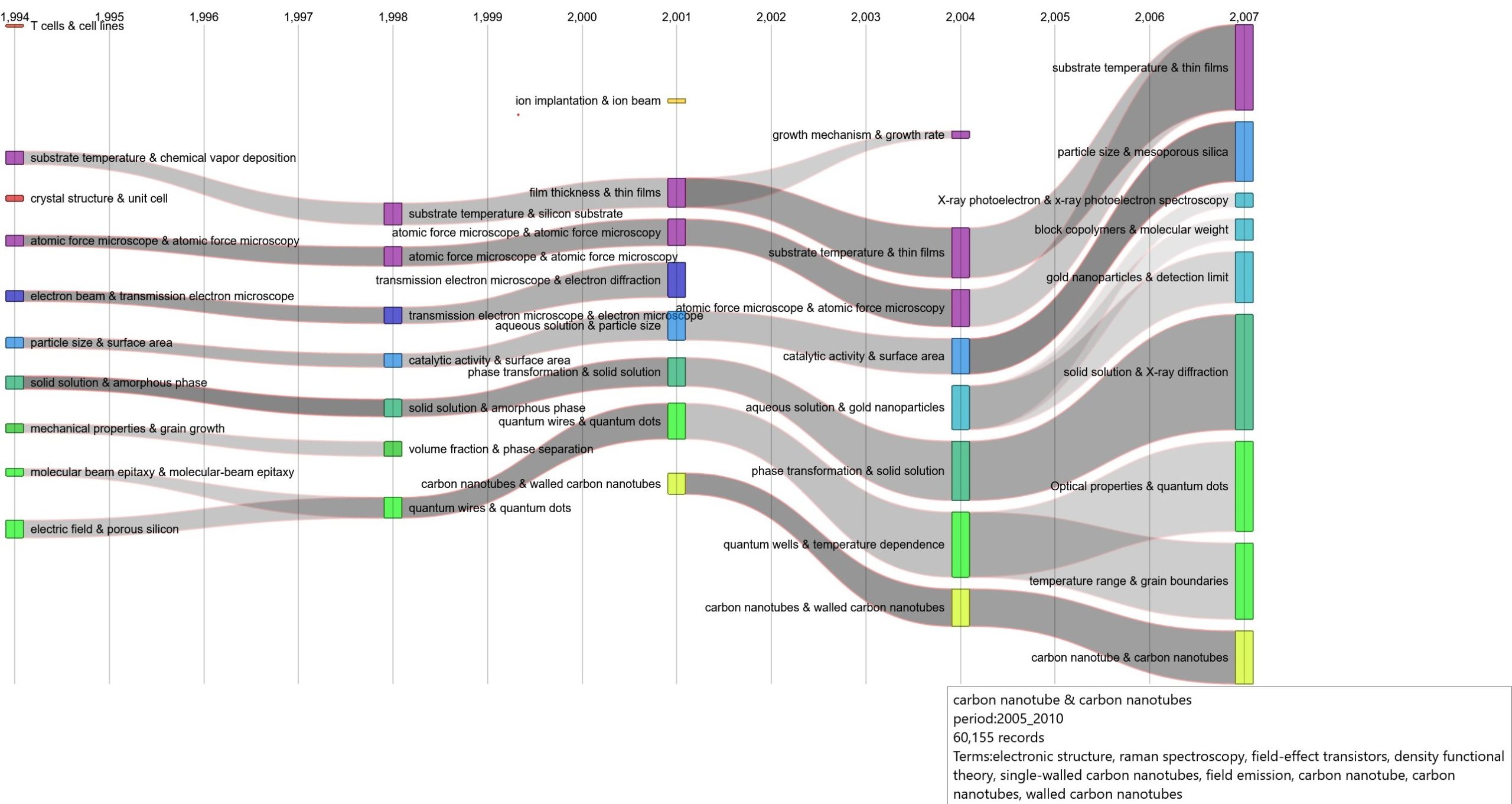
Tubes life cycle at mesoscopic scale
Birth and death
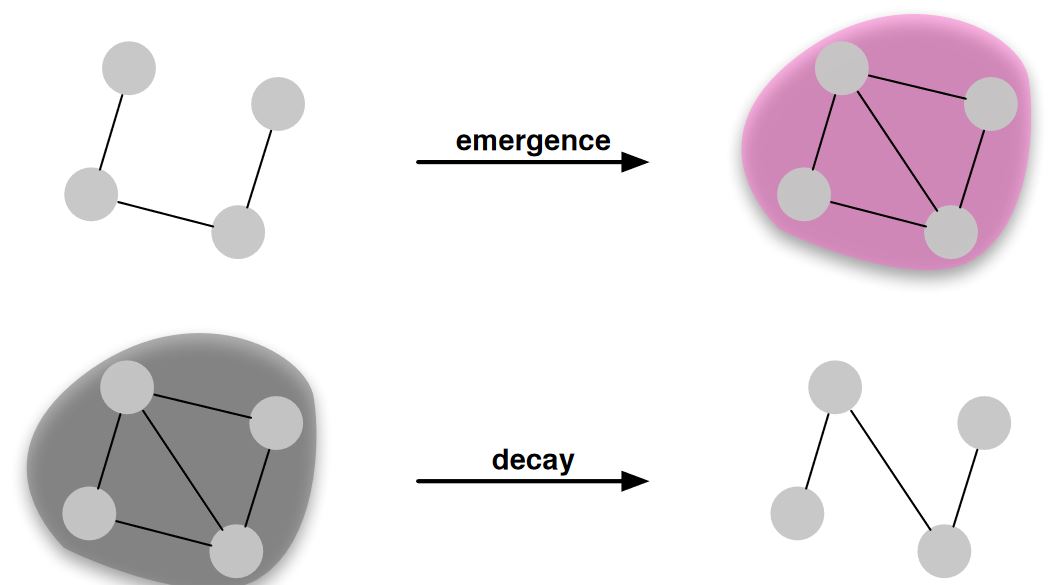
Maturing

Meet or separate
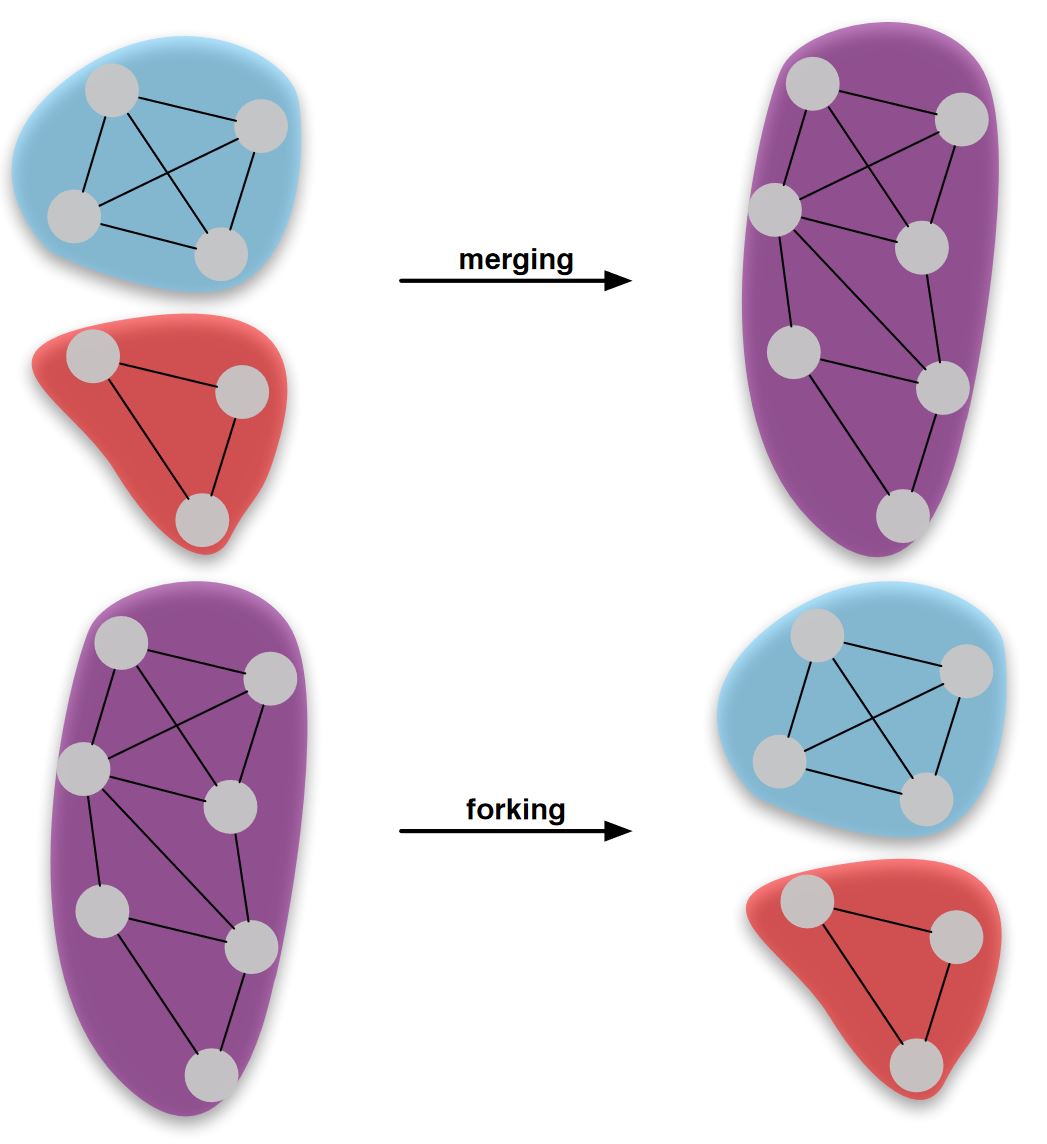
References
Rule, A., Cointet, J. P., & Bearman, P. S. (2015). Lexical shifts, substantive changes, and continuity in State of the Union discourse, 1790–2014. Proceedings of the National Academy of Sciences, 112(35), 10837-10844.

